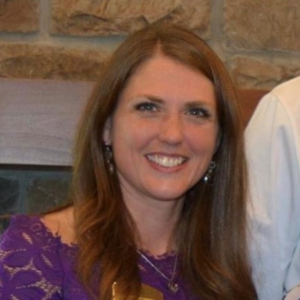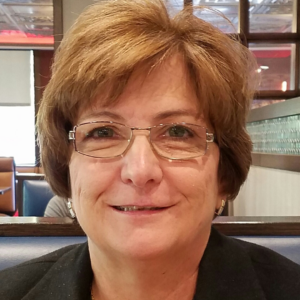The Importance of Personalized Care in Memory Care Settings
When it comes to memory care, prioritizing personal caregiving offers residents many benefits. It’s an approach that Ashley Briggs, memory care director at Blakeford Senior Life in Nashville, Tennessee, believes in. Briggs and her team utilized that philosophy when developing Blakeford’s new state-of-the-art, secure memory campus.
Briggs shares her thoughts on the value of personalized memory care and how she and her team integrated that personalization into the campus with I Advance Senior Care.
The Importance of Personalized Memory Care

Ashley Briggs, memory care director at Blakeford Senior Life
Briggs notes that personalization should be the basis of all caregiving. “Everyone is a person with their own preferences and their own opinions about how they want to see things done,” she says. “If we are doing everything we should be doing to help meet those expectations, we’re setting people up for success.”
That personalized care has particular value for memory care residents, and it can set residents up for success throughout the day. “We’re not just here to get people dressed and fed, we’re here to help people continue to live and enjoy life during those retirement years, regardless of what’s going on with their medical state,” Briggs explains. “Everyone deserves to continue to live with the best quality that they can get.”
Embracing a personalized care approach means that residents can continue to enjoy the things in life that are meaningful to them. That might mean getting up and having coffee while reading the paper for a resident; this type of care helps to maintain residents’ normal routines. It also gives residents’ families peace of mind. “Daughters, sons, and spouses can take a step back from that caregiver role and get back into the role that they really should have with that person,” says Briggs.
Creating a Personalized Approach to Memory Care
Ideally, personalized care allows for a natural flow of the day for each resident, says Briggs. She notes that in a community setting, residents get social engagement that can be very beneficial for them in any stage of Alzheimer’s. “An ideal setting shows residents utilizing the space just as they would at home,” says Briggs. “They have the opportunity to engage in different activities that are things they would have pursued if they were at home right now with no physical or cognitive needs.”
To successfully implement such personalized care, it’s essential to find staff who understand what caring for someone with Alzheimer’s truly requires. That is particularly important when Alzheimer’s affects residents’ abilities to verbalize their needs and wants, and how they want things to be done. “You have to find people with a special skill set for reading a person outside of just their verbal communication,” notes Briggs. “Everyone communicates a little differently, so every day we’re challenged to approach a resident in a way that we know we can start to read what those cues might be for someone.”
Providing personalized care is challenging, but rewarding. Caregivers need to find daily ways to work a resident’s regular routine and comfort level into the day, while providing the best care.
Providing Personalized Care at Blakeford Senior Life
The ability to provide quality care starts with the design of Blakeford Senior Life’s physical space. That design, which had already been defined when Briggs joined the organization, features a two-story memory care wing with 12 apartments on each floor. Each floor runs as its own community and includes walkable outdoor space, common areas for residents and families, and apartments that are designed to help residents be as independent as possible. Those apartments minimize distractions and allow residents to see their entire space.
“Residents’ personal space is set up in a way that they’re going to have more opportunities to do things even in their own personal care that maybe they couldn’t do at home,” says Briggs. Standard apartment designs, with clothing behind a closed door, limits the daily activities that memory care residents can perform. “This design puts those things front and center. Someone may be able to still do a lot of their own physical care, but their space previously wasn’t set up for them to do it in a way that was successful to them.”
The memory care community also features research-based design elements, including artwork and finishes. Interactive art pieces are strategically placed throughout the community. Some of those pieces feature tactile elements that residents can touch and manipulate, while pieces that play music when people walk by are placed to engage residents.
The campus is full of residents’ personal touches, including a new art gallery. Briggs explains that while meeting with one resident’s family and learning about his past habits and interests, the Blakeford team discovered that the resident is an incredible artist, and art has been his lifelong passion. He and his wife had hosted art shows, and he had sold paintings throughout the Nashville area.
The resident’s niece noted that she had approximately 120 of his paintings in storage and offered them to the community if Blakeford could use them. Briggs proposed dedicating a wall to the resident’s artwork, and has planned an unveiling to make the event extra special. “We’ll be hosting an art show after the first of the year where we’ll dedicate the wall to his art pieces,” says Briggs. The resident’s art will also be temporarily displayed on easels throughout the community. “He has the opportunity to do something he used to always do that Alzheimer’s has taken away from him,” Briggs explains. “It will look different from the way he and wife used to do it, but we get to give back that passion to him.”
Briggs also found ways to support the resident as he continues to create art. She brought him into the activities room, which has two full walls of large windows, and asked him to choose the area that would give him the best light, so they could create an art station for him to use. “We could have put it in his apartment, but to give him a space that seemed a little more official seemed to really make him light up,” says Briggs. The resident works on a piece every day at that station.
Briggs invites anyone in the Nashville area to see the on-campus activities and how the community embraces a personalized approach to care. “Memory care is just a small piece of a bigger picture project,” she says. “A whole different generation of seniors are coming into senior living communities. We’re there with them, adjusting and changing our approach to care. Our memory care is a small reflection of how we’re doing that.”

Paige Cerulli is a contributing writer to i Advance Senior Care.
Related Articles
Topics: Activities , Alzheimer's/Dementia , Featured Articles , Resident Care











